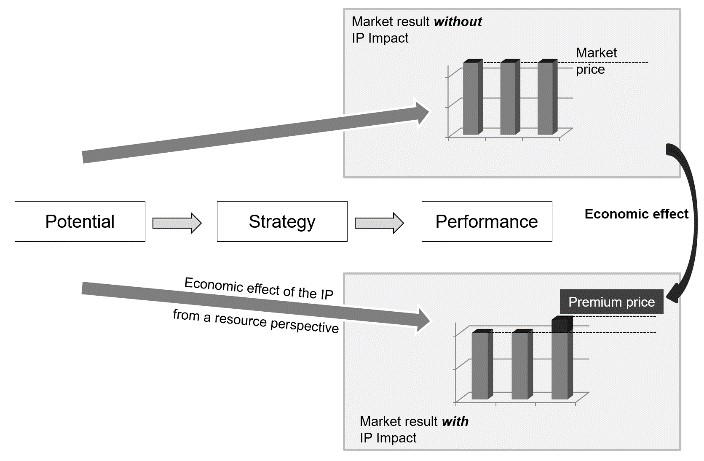Developing IP Strategies for the digital transformation: CEIPI MIPLM 2021-22
The MIPLM program started in January 2022 with 30+ students from thirteen different countries in Europe, Asia and Latin America at the Center for International Intellectual Property Studies, CEIPI, in Strasbourg. The 1st module of the MIPLM focusses on strategy development and the economy of IP. In the first part of this module, under the headline “Future of IP in the fourth industrial revolution”, different scenarios are discussed how IP could be further developed especially under the framework of the upcoming digital transformation. The lectures also comprise questions about the knowledge economy and the role of IP in economic studies.
In the second part different ways are presented, how corporate strategies can be evaluated, and IP strategies are developed to be aligned with competitive strategic approaches. Especially the question, how IP strategies should be addressed to C-Level managers and could be effectively communicated, is discussed. Different case study examples from Apple, Danone and Nestlé, Rittal, Vorwerk Thermomix, Pfizer, Beiersdorf, Sony, JVC, Netflix, LUQEL, GoreTex, Intel, Procter&Gamble, Schattdecor help to illustrate the key learnings form a practical side. In intensive group work within an international and interdisciplinary background the students learn, how to integrate patents, trademarks and design rights in a systematic way to create effective spheres of exclusivity around customer benefits accompanied of premium price strategies in b-to-b and b-to-c markets.
Cannot open the video? Please click: https://www.youtube.com/watch?v=rp_AbrEm8MY
Then the digital transformation of business and organizational activities, processes, competencies and models to leverage the changes and opportunities of digital technologies and their accelerating impact across industries was discussed. Especially, the consequences of a digital transformation strategy to improve business processes and to develop new capabilities and business models for IP management are explained on different case studies and industry examples. With the example of digital health, the convergence of digital technologies with health, healthcare, living and society to enhance the efficiency of healthcare delivery and more personalized and precise medicines, the opportunities of the digital transformation was illuminated. IP strategy and IP organization has to be adapted to the new challenge
digital transformation strategy to improve business processes and to develop new capabilities and business models for IP management are explained on different case studies and industry examples. With the example of digital health, the convergence of digital technologies with health, healthcare, living and society to enhance the efficiency of healthcare delivery and more personalized and precise medicines, the opportunities of the digital transformation was illuminated. IP strategy and IP organization has to be adapted to the new challenge  of the digital transformation. Within the new paradigm of the information and telecommunication industry, the pharma industry has to adapt their IP activities. In general, the flexibility to use IP within the industrial value chain goes up with the digitalization and the effectiveness of IP as a competitive tool is weakened. These consequences were discussed and illustrated.
of the digital transformation. Within the new paradigm of the information and telecommunication industry, the pharma industry has to adapt their IP activities. In general, the flexibility to use IP within the industrial value chain goes up with the digitalization and the effectiveness of IP as a competitive tool is weakened. These consequences were discussed and illustrated.
During this 1st module, the students worked together on a case study for IP strategy development and presented their solutions.
IP strategy development case study: functional food in the digital revolution – from humble yoghurt to individual probiotic super food.
 People are increasingly looking for foods which solve their health problems. In recent years, manufacturers have developed products with additives they claim to be beneficial for people’s health and wellbeing. This has resulted in a new category of products referred to as “functional foods” – and probiotic yoghurt has pioneered this revolution.
People are increasingly looking for foods which solve their health problems. In recent years, manufacturers have developed products with additives they claim to be beneficial for people’s health and wellbeing. This has resulted in a new category of products referred to as “functional foods” – and probiotic yoghurt has pioneered this revolution.
Probiotic yoghurt contains specific bacterial cultures which supposedly promote their consumers’ health. Most people are unaware of what probiotics actually are. French food manufacturer Danone recognized the opportunities provided by a “little bottle full of bacteria” early on and developed Actimel.
Current trends permit the development of new business models for functional food: Health and fitness-conscious individuals take great care of what they eat and adjust their diet specifically to their lifestyle. They continuously monitor their fitness and other health data by using wearable tracking devices such as fitness wristbands. The data collected by these “wearables” is stored by the relevant providers and can be analyzed in order to gain insights related to training progress, etc.
Simultaneously, these data are used to optimize people’s diet. The increasing digitization of value chains enables manufacturers to produce and sell customized products which meet the individual requirements of their customers. This also permits the addition of suitable health-promoting substances in order to customize functional foods to individual customers’ needs. The health and fitness data recorded by the wearables can be analyzed and used in order to manufacture products with the optimal formulation for each individual user at any given time.
Customized functional food could be offered to customers in the form of subscriptions. This means that the customer places an order to continuously buy customized yoghurt in a specific frequency. As soon as the next delivery is due the actual fitness / health status is automatically retrieved from the wearable manufacturers’ databases and the individual yoghurt is produced. Yet besides the individualized composition and production of the yoghurt there is another major challenge for setting up an adequate logistics structure. Due to the fact that yoghurt is perishable food the cooling chain must not be broken until the product reaches the customer.
Hence “normal direct delivery to the customers’ homes” as offered by logistics service providers is not applicable. For this reason, a different distribution channel can be created by partnering with fitness studios. It can be assumed that a majority of health / fitness conscious people regularly attends such a fitness studio. For this reason, the customized yoghurt could be delivered to these places and could be immediately cooled there. Additionally, such partnerships could create great credibility for the value proposition of health and fitness supporting nutrition.
Case study presentations:
- Task 1:
Please give an overview of the case on hand in brief words.
Please explain which kind of competitive advantage will be created in the business model behind functional yoghurt. Please describe the goals of setting up a 360° IP strategy for individualized functional yoghurt. Which kind of generic IP-strategy might be applicable for the case on hand. Please refer as well to the “fortress monopoly” as to the “value-added monopoly” and give reasons for your answers. Please describe the role of IP as an instrument for protecting the resources of a firm as well as for designing market positions.
Here you can follow the presentation to task 1
Cannot open the video? Please click: https://www.youtube.com/watch?v=BsJN-i0PmQk
- Task 2:
Please outline the business model behind functional yoghurt. For this purpose please distinguish the resource perspective and the market perspective of the business model. Please explain the concept of a 360° IP strategy and of a 360° Objectives Matrix. Please develop a 360° objectives matrix for the given case.
Here you can follow the presentation to task 2
Cannot open the video? Please click: https://www.youtube.com/watch?v=n8hx7ity-mA
- Task 3:
Please explain the principle of value creation by means of IP. In your opinion, which impacts should IP develop in the individualized functional yogurt business model? What measures must be taken to create the desired IP impact? In the present case, please develop ideas for areas in which IP rights should be designed and explain why these IPRs would be useful for the conversion of the business model. How can it be ensured that the IP impacts can be internalized? How could IP also serve to fulfil this task? For the present case study, please give examples of how IP can used to generate a unique communication position.
Here you can follow the presentation to task 3
Cannot open the video? Please click: https://www.youtube.com/watch?v=zfVYWPommys



